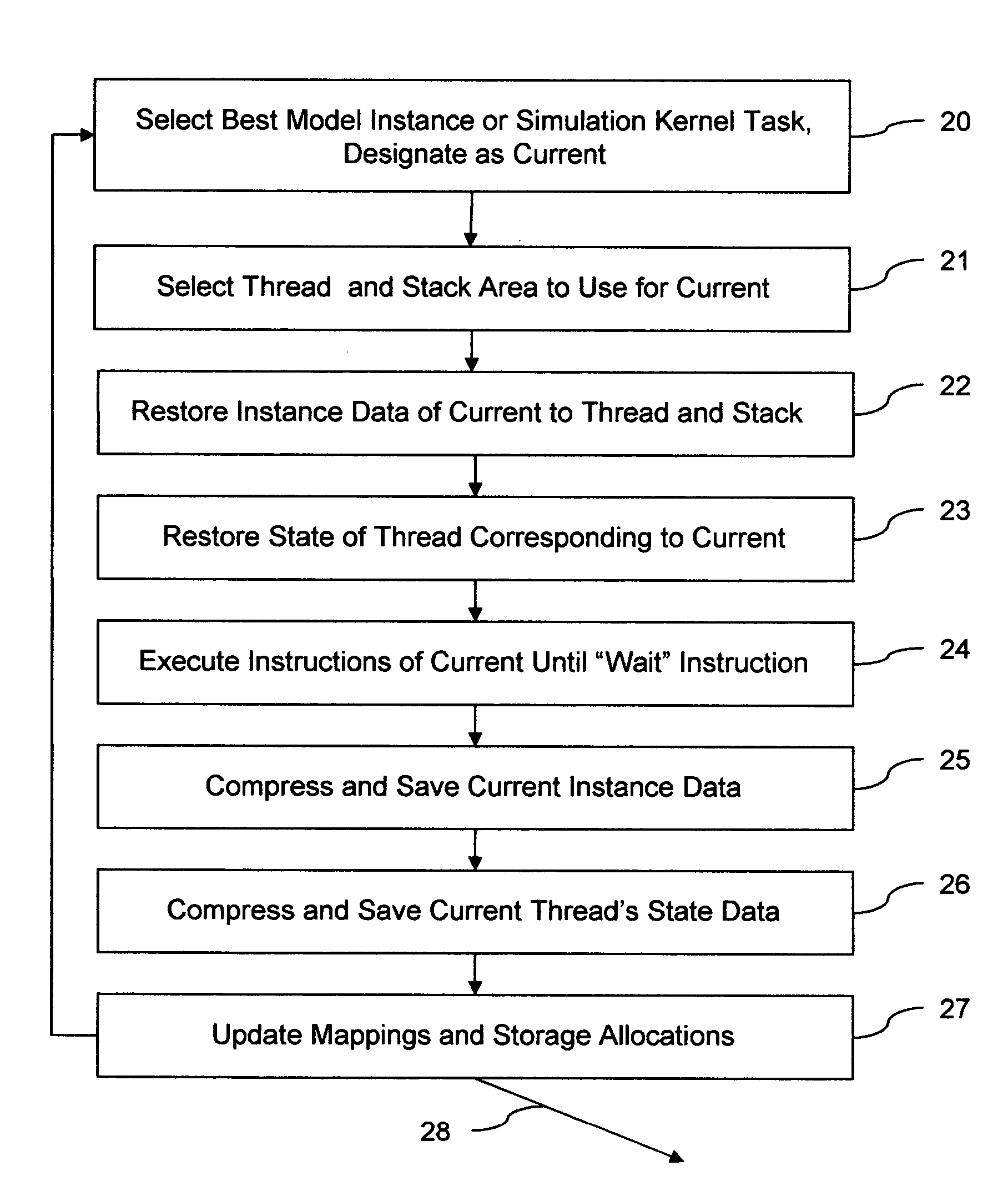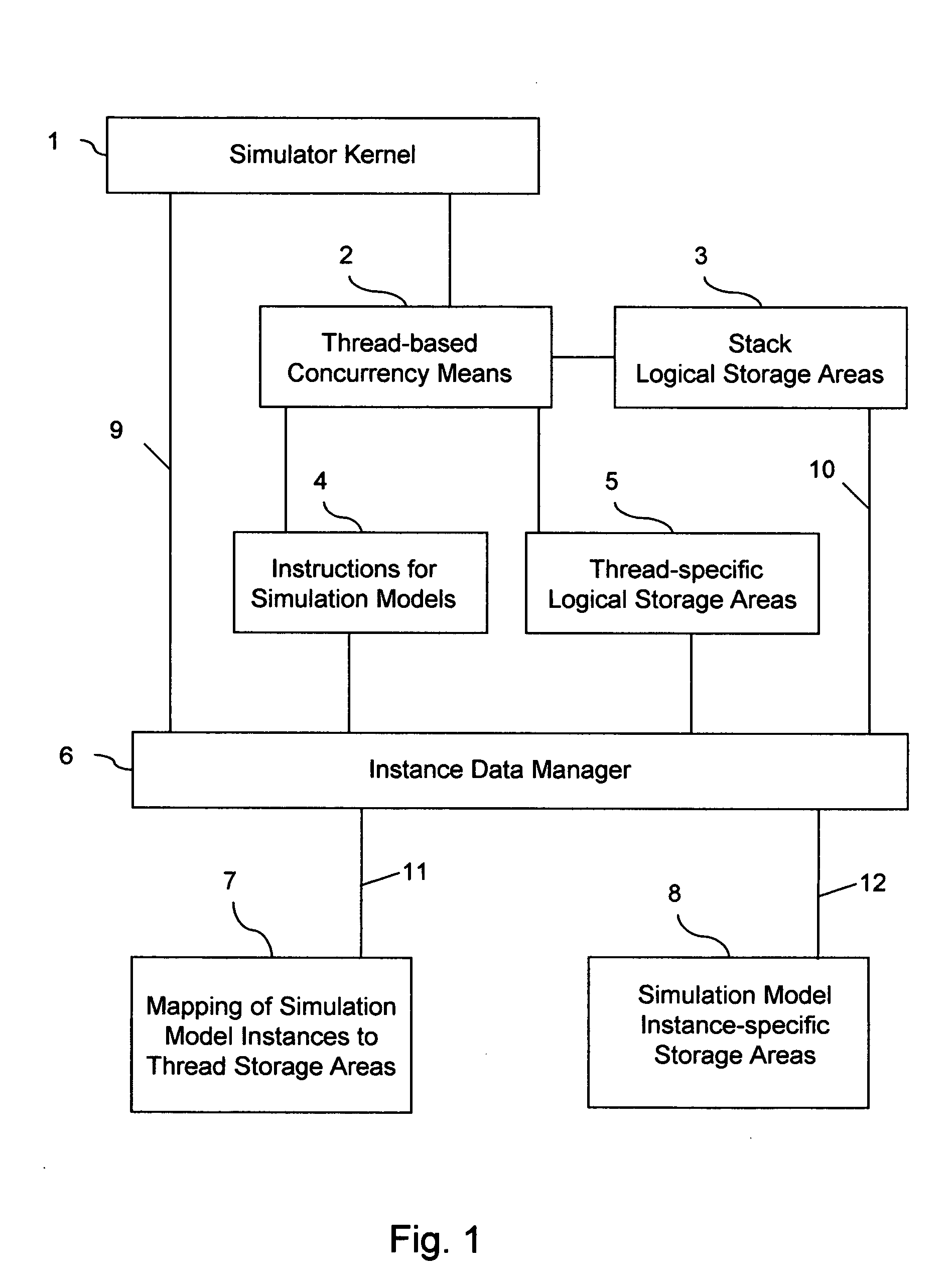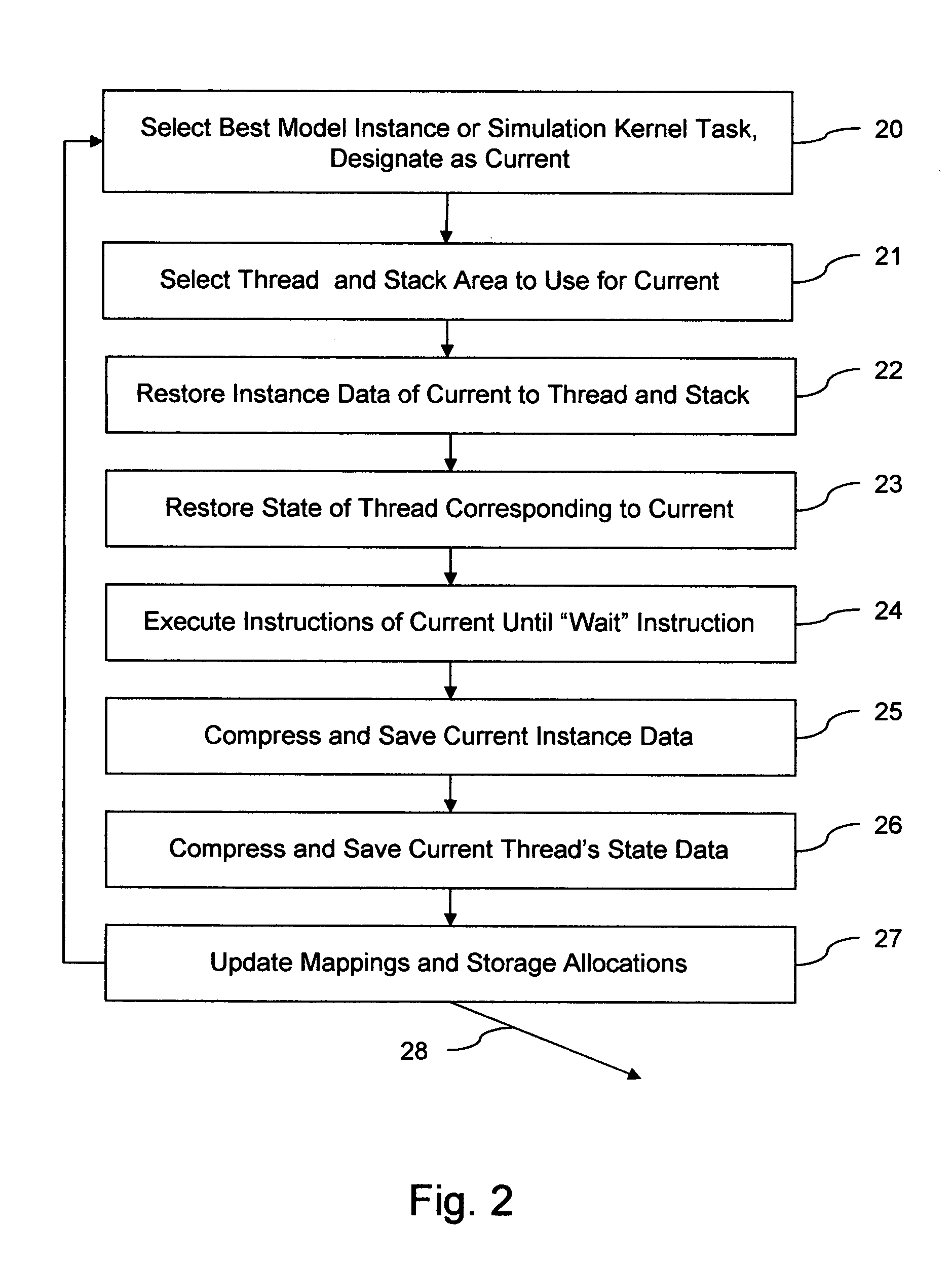Method and machine for efficient simulation of digital hardware within a software development environment
a software development environment and simulation method technology, applied in the field of methods, can solve the problems of not being appropriate for hardware simulation, not being able to efficiently simulate packages, and not being able to efficiently use cached module instance data, so as to reduce the misprediction of cpu branches and improve the efficiency of simulation
- Summary
- Abstract
- Description
- Claims
- Application Information
AI Technical Summary
Benefits of technology
Problems solved by technology
Method used
Image
Examples
Embodiment Construction
[0016] An embodiment of the invention is depicted by the block diagram of FIG. 1. A Simulation Kernel 1 is responsible for causing the execution, in a dynamically ordered sequence, of one or more of the Instructions for Simulation Models 4, acting on the instance-specific data of model instances which are managed by the Instance Data Manager 6 and stored in the Instance-Specific Storage Areas 8.
[0017] While a simulation model or kernel task is executing, it runs as a thread of execution under a Thread-based Concurrency Means 2. The Thread-based Concurrency Means 2 provides the executing model or kernel task with a Stack Logical Storage Area 3 which is accessible through a CPU stack-pointer or stack pointers and which provides a convenient way to implement automatic storage for local variables and parameter passing, as is common in modern computer systems. Each thread of the Thread-based Concurrency Means 2 must also maintain a small amount of storage to be able to correctly suspend...
PUM
 Login to View More
Login to View More Abstract
Description
Claims
Application Information
 Login to View More
Login to View More - R&D
- Intellectual Property
- Life Sciences
- Materials
- Tech Scout
- Unparalleled Data Quality
- Higher Quality Content
- 60% Fewer Hallucinations
Browse by: Latest US Patents, China's latest patents, Technical Efficacy Thesaurus, Application Domain, Technology Topic, Popular Technical Reports.
© 2025 PatSnap. All rights reserved.Legal|Privacy policy|Modern Slavery Act Transparency Statement|Sitemap|About US| Contact US: help@patsnap.com



